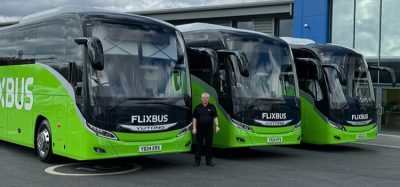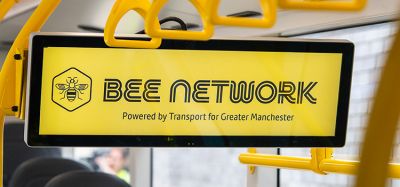Autonomous vehicles in commercial transportation
- Like
- Digg
- Del
- Tumblr
- VKontakte
- Buffer
- Love This
- Odnoklassniki
- Meneame
- Blogger
- Amazon
- Yahoo Mail
- Gmail
- AOL
- Newsvine
- HackerNews
- Evernote
- MySpace
- Mail.ru
- Viadeo
- Line
- Comments
- Yummly
- SMS
- Viber
- Telegram
- Subscribe
- Skype
- Facebook Messenger
- Kakao
- LiveJournal
- Yammer
- Edgar
- Fintel
- Mix
- Instapaper
- Copy Link
Posted: 14 September 2017 | Susan Beardslee (Senior Analyst at ABI Research) | No comments yet
With ABI Research’s recent survey finding that the transportation industry plans to introduce robotics into their business operations within the next year, Susan Beardslee, Senior Analyst at ABI Research discusses the survey’s findings and what technology transportation businesses are focusing on…


ABI Research has found that there continues to be a growing case for advanced driver-assistance systems (ADAS) and autonomy in commercial vehicles, despite early initial adoption of the former. However, original equipment manufacturers (OEMs) are quickly adding such features to their new models and ADAS popularity is increasing.
Multiple commercial vehicle vendors are in the early investigation and assessment phase of autonomy, and manufacturers and suppliers seeking to implement autonomous vehicles over a longer-term horizon tend to operate in environments that would require autonomous vehicles to scale like Uber.
Autonomous, not driverless
Many people tend to confuse autonomous with driverless, as if the former will automatically entail the latter, which is not necessarily true.
ABI Research believes it is unlikely that driverless trucks will be employed on public infrastructure, except for platooning, in the foreseeable future but there are considerable opportunities for driverless buses and trams on closed infrastructure (airport terminals, university campuses, etc) and low-speed public infrastructure.
Several enabling technologies for ADAS and autonomy are in the planning or deployment phase with many companies, including Ethernet, Wi-Fi, robotics and AI, as well as human machine interface (HMI) technologies, such as augmented reality (AR) and virtual reality (VR).
Technologies such as 5G are not anticipated to be deployed broadly in the near term.
Artificial intelligence
Artificial intelligence is developing in transportation (although ‘monitoring’ was acknowledged by 36% of ABI Research’s US-based survey respondents as a top ranked application due to the nature of regulatory and safety concerns for transportation).
The role of AI in navigation and guidance for autonomous vehicles remains nascent, while recognition and detection methods including real-time (vision-based) solutions for the road and driver as well as Intelligent Transportation Systems (ITS) remain in development.
How the transportation industry is likely to react to new technologies
ABI Research’s survey found that larger transportation companies are more likely to assess and implement new technology solutions as early adopters, due to stronger margins and greater operational scale, along with the expected ROI. About 18% of the respondents are currently assessing autonomous vehicles, with 6% having some type of plans to do so over the next year. Data and security concerns remain barriers, along with the cost of the technology.
ADAS features including driver monitoring, video and biometrics collectively accounted for 24% of the top ranked disruptive technologies. Truck OEMs including Volvo, Paccar and Daimler are investing heavily along with Uber’s Otto and GM’s Cruise Automation, while video and biometrics are growing to address safety concerns such as Gentex’s iris authentication and Chronocam’s bio-inspired vision sensors.
Nearly half (42%) of the survey respondents saw a strong link between Over the Air (OTA) updates and platooning, followed by commercial vehicle automation (38%). Autonomous vehicles will rely on OTA to identify and repair potential software risks and add needed features.
Respondents do not foresee drones as an integral part of delivery solutions for another five-to-seven years. This may be due to still-developing pilots such as UPS and Amazon (the latter won a patent last year for a solution to permit drones to land on and harness a ride on one of its vehicles).
The benefits of new technology for the transportation industry
Regardless, many see the key benefits of autonomy including:
- Safety: Autonomous commercial vehicles are the most realistic way of achieving a zero-accident future, which could save up to 4,500 lives in the United States annually
- Efficiency: V2X communication and real-time maps will bring a new era in fuel-efficient driving. The abundance of ADAS sensors and V2V communication in autonomous commercial vehicles will make platooning pervasive in commercial transport
- Productivity: Employee time can be repurposed if they are no longer required to actively control a vehicle. This will involve a radical transformation from a traditional truck driver to a mobile worker.
The entire supply chain, which encompasses transportation and logistics, is rapidly evolving with innovation, along with a significant influx of funding and new partnerships. The new value chain runs from the driver to the vehicle, road infrastructure, warehousing/distribution centres and through a variety of regulatory bodies.
There is no more ‘business as usual’ but a wealth of opportunities awaits.
Biography
Susan Beardslee, Senior Analyst at ABI Research, provides global intelligent transportation and e-freight research coverage, including commercial telematics, air/rail/maritime service models, electrification, prognostics and over-the-air (OTA), gateways, and mobile resource management.
Susan’s background includes relevant experience in embedded technologies and IoT, advanced automotive, transport, and UAVs. She previously worked for Intel and ON Semiconductor and held a variety of positions with other semiconductor manufacturers and suppliers. She assumed roles in market research, as well as strategy, operations management, competitive analysis, and IT, including cyber security management.
Related topics
Business Models, Connected & Autonomous Vehicles, Fleet Management & Maintenance, Multimodality, Ticketing & Payments, Transport Governance & Policy
Related organisations
Uber








